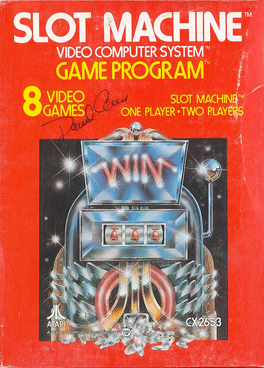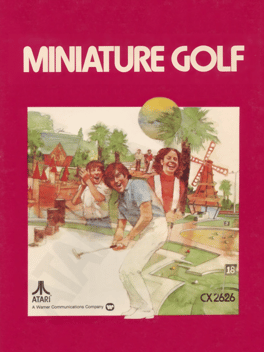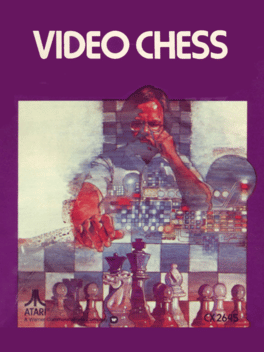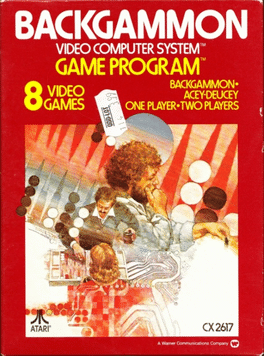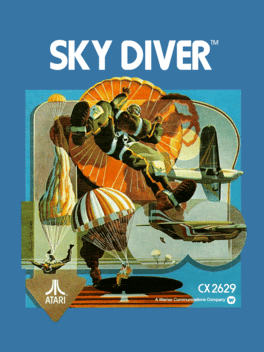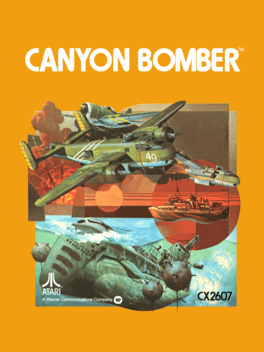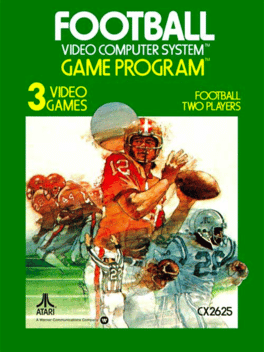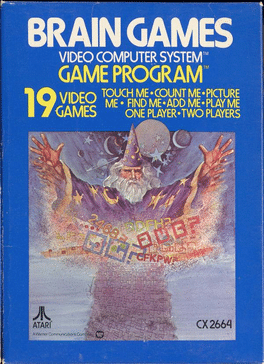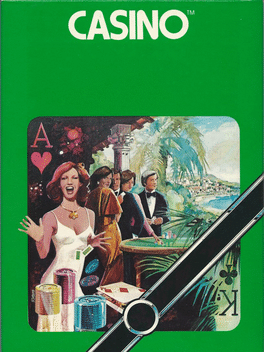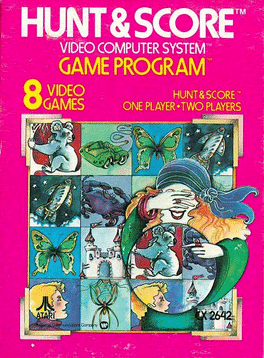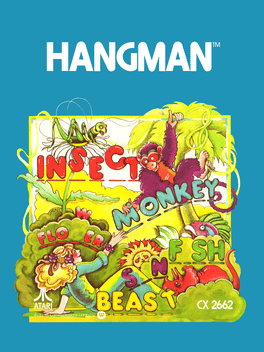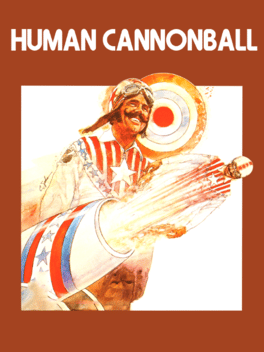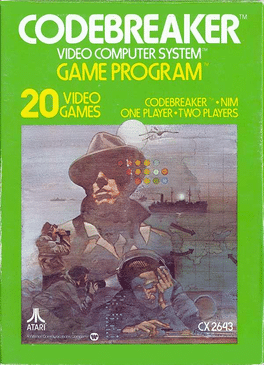New Atari2600 Games - Page 28
-
Slot Machine
1979
-
Miniature Golf
1979
Miniature Golf
1979
star 4.1This is a computer game simulation of a miniature golf course. It attempts to refine your sense of timing and your perceptiveness in judging distance. As in a traditional miniature golf course, a variety of obstacles are placed in your path to the cup. Depending on the game that is selected, the course can be played solo, or a two player competition can be initiated. -
Bowling
1979
Bowling
1979
star 5.8The game is based on the game of bowling, playable by one player or two players alternating. In all six variations, games last for 10 frames, or turns. At the start of each frame, the current player is given two chances to roll a bowling ball down an alley in an attempt to knock down as many of the ten bowling pins as possible. The bowler (on the left side of the screen) may move up and down his end of the alley to aim before releasing the ball. In four of the game's six variations, the ball can be steered before it hits the pins. Knocking down every pin on the first shot is a strike, while knocking every pin down in both shots is a spare. The player's score is determined by the number of pins knocked down in all 10 frames, as well as the number of strikes and spares acquired. -
Video Chess
1979
Video Chess
1979
Video Chess is a video game released by Atari in 1979 for the Atari 2600, based on the rules of chess. -
Backgammon
1979
-
Sky Diver
1979
-
Canyon Bomber
1979
Canyon Bomber
1979
star 3.3Canyon Bomber is the a port of the arcade game of the same name, rewritten in color and with a different visual style for the Atari 2600. The player and an opponent fly a blimp or biplane over a canyon full of numbered, circular rocks, arranged in layers. The player does not control the flight of vehicles, but only presses a button to drop bombs which destroy rocks and give points. Each rock is labeled with the points given for destroying it. As the number of rocks is reduced, it becomes harder to hit them without missing. The third time a player drops a bomb without hitting a rock, the game is over. -
Football
1978
Football
1978
Football is a football game for two players. The game is played from a top down point of view of the field and features two skill levels and three game variations. Using the joystick you can choose from one of five different offensive or defensive plays. In the first game variation, after selecting a play you then control the players on the field. In the second game, you have the option of controlling your players after a play is selected or allowing the computer to control the players. The third game has the computer controlling the players at all times and you only need to select the plays you wish it to execute and indicate when you wish to punt or pass the ball. In all of the game variations the timer begins at 5 minutes, and is active only during plays. Of course, the team with the most points when the timer runs out wins! -
Brain Games
1978
Brain Games
1978
In Brain Games one or two players attempt to earn as many points as possible by solving various puzzles presented by the computer. -
Casino
1978
Casino
1978
star 3.4Casino is a collection of three card games: Blackjack, Five-card stud poker, Poker Solitaire. -
A Game of Concentration
1978
The game is played using a matrix of numbered panels, either 4 x 4 (for 16 panels) or 5 x 6 (for 30 panels). Using the keypad, players enter the number of the panels they wish to reveal. If the images behind the two panels match, the panels are removed and the player scores 1 or 2 points, depending on what difficulty the switch is set to, along with an extra turn. The game has a total of eight variations, four each for each matrix size and four have wild cards. Each matrix can be played by either a single player or by two players taking turns; in single-player games, the player attempts to clear the matrix with as few incorrect matches as possible. Also, players can enable wild cards that will match any image on the board. -
Polo
1978
Polo
1978
Developed as a promotional game for Ralph Lauren's Polo cologne. The cart, box and manual are reproductions from 2002 with permission of programmer Carol Shaw. -
Hunt & Score
1978
Hunt & Score
1978
Hunt & Score is similar to the game Memory. The player is presented with a numbered grid; behind each grid section is a picture. On each turn, the player chooses two grid sections in an attempt to find two matching pictures. Points are earned for finding matching pictures, and the player with the most points at the end wins. Several game options include a 16 or 30 square game grid, the ability to handicap one of the players, and the ability to enable or disable wild cards. -
Slot Racers
1978
Slot Racers
1978
Slot Racers is a joystick-controlled action game, with a total of nine game variations programmed within the cartridge. The object of the game is to pilot your car through a maze, while attempting to fire missiles at your opponent's car, as well as evading the missiles your opponent fires at your car. Each time one of the respective cars is struck by a missile, the player controlling the other car receives one point. Victory is achieved through the scoring of twenty-five points. The game itself has four different mazes, and options concerning missile speed, and other factors, within the context of its nine variants, selectable via the Game Select switch. The Difficulty Switches control the rate of fire each car is capable of. -
Home Run
1978
Home Run
1978
star 4.2This is the first of three iterations of baseball from Atari and is the most simple. The pitcher pitches and controls the direction of the ball. The batter hits and keeps running until he's made to stop. There are up to 3 defensive players that can try to get the batter out after he hits. All hits are grounders and defensive players can't throw the ball. -
Hangman
1978
Hangman
1978
star 4.4Hangman was one of the eleven Atari 2600 titles that were part of the second wave of games released in 1978. It is based on the old words guessing game played with paper and pen. The player must guess which letters compose a word. Every wrong guess adds to the diagram of a man being hung, or in the case of this game, a monkey hanging from a bar. Eleven wrong guesses ends the game. Games can be played as one or two player games, and different grade levels of words. Two players can even provide the words for one another. -
Human Cannonball
1978
Human Cannonball
1978
star 4In Human Cannonball your goal is to fire a man out of a cannon and have him land in a bucket of water. To do this you need to adjust your cannon so the position, angle, and firing speed are just right. You score a point for each successful landing, and the game ends after seven attempts. Several game variations are included which allow you to have the position, angle and speed all set by the player, or have one or more of these in a fixed position, or have one or more of these randomly set by the computer. If you wish to make the game more challenging, you can also set a moving wall in front of the bucket which will make your timing more critical. -
Flag Capture
1978
Flag Capture
1978
star 3.9Flag Capture was one of the eleven Atari 2600 titles that were part of the second wave of games released in 1978. It can best be compared to a very early and primitive Minesweeper. One or two players must attempt to discover which tile a flag is hidden under. Players are given clues such as directional arrows which indicate the flags location, or numeric tiles which indicate the flag's distance. Players must also watch out for bombs which explode if revealed. -
Codebreaker
1978
Codebreaker
1978
This one's not for stupid people. The goal of codebreaker is to guess a 3 or 4 digit number in 12 tries. The computer lets you know when your on the right track with some vague clues. In the second game, NIM, you and your opponent strategically remove blocks in an attempt to be the one to remove the last block. -
Space War
1978
Space War
1978
star 4.7This video game is an Atari 2600 port of Spacewar!, the famous 1962 computer game by Steve Russell. The cartridge comes programmed with 17 game variations. Variations 1 to 13 are duels between two ships and 14 to 17 are for one player. In some of the variations the ships fight near a planet which has gravitational attraction. This concept was used in the Star Control series of games.
